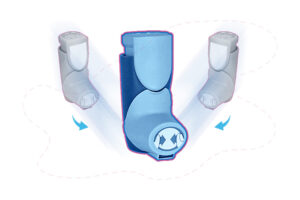In the rapidly evolving field of immunology, understanding the intricate mechanisms of the immune system is crucial. One of the areas gaining significant attention is the study of non-classical Major Histocompatibility Complex (MHC) tetramers. These tetramers play a vital role in immune response, offering insights into both the mechanisms of immune function and potential therapeutic applications. This article explores the mechanisms and applications of non-classical MHC tetramers, highlighting their importance in advancing immunological research.
Understanding MHC and Tetramers
Major Histocompatibility Complex (MHC) molecules are proteins found on the surface of cells that play a critical role in the immune system’s ability to recognize foreign substances. MHC molecules are categorized into two classes: classical (Class I and Class II) and non-classical. While classical MHC molecules are well-studied and understood, non-classical MHC molecules are less explored but equally important.
MHC tetramers are complexes used to study antigen-specific T cells. They consist of four MHC molecules bound to a biotinylated peptide and a fluorescent molecule. This structure allows researchers to identify and analyze specific T cells that recognize particular antigens, providing valuable insights into immune responses.
Mechanisms of Non-Classical MHC Tetramers
Non-classical MHC molecules, including HLA-E, HLA-F, and HLA-G in humans, exhibit distinct properties compared to their classical counterparts. These molecules are involved in various immune processes, including the regulation of natural killer (NK) cells and certain T cell subsets.
- Antigen Presentation: Non-classical MHC tetramers can present a wide array of antigens, including non-peptide antigens such as lipids and small molecules. This versatility is crucial for recognizing diverse pathogens and initiating appropriate immune responses.
- Regulation of NK Cells: Non-classical MHC molecules interact with NK cell receptors, modulating their activity. For instance, HLA-E interacts with the NKG2A receptor, delivering inhibitory signals that prevent NK cells from attacking normal cells, thereby maintaining self-tolerance.
- Immune Evasion by Pathogens: Some pathogens exploit non-classical MHC molecules to evade the immune system. For example, certain viruses can upregulate HLA-G expression, which suppresses the activity of NK cells and cytotoxic T lymphocytes, facilitating persistent infections.
- Role in Pregnancy: Non-classical MHC molecules like HLA-G play a crucial role in maternal-fetal tolerance. By interacting with immune cells at the maternal-fetal interface, these molecules help prevent the maternal immune system from attacking the fetus, ensuring a successful pregnancy.
Applications of Non-Classical MHC Tetramers
The unique properties of non-classical MHC tetramers open up numerous applications in both research and clinical settings. Their ability to provide detailed insights into immune responses makes them invaluable tools in various areas of immunology.
- Immunotherapy: Non-classical MHC tetramers have significant potential in developing novel immunotherapies. By targeting specific T cell subsets or modulating NK cell activity, these tetramers can enhance the immune system’s ability to fight cancer and infectious diseases.
- Vaccine Development: Understanding how non-classical MHC molecules present antigens can inform the design of more effective vaccines. By incorporating epitopes recognized by non-classical MHC molecules, vaccines can elicit robust and targeted immune responses.
- Autoimmune Disease Research: Non-classical MHC tetramers are valuable tools for studying autoimmune diseases. By identifying and analyzing autoreactive T cells, researchers can gain insights into the mechanisms driving these diseases and develop strategies to modulate immune responses.
- Transplantation: Monitoring non-classical MHC interactions can improve transplant outcomes. For instance, measuring HLA-G expression levels can help predict transplant rejection or acceptance, allowing for better management of immunosuppressive therapies.
- Infectious Disease Research: The role of non-classical MHC molecules in pathogen recognition and immune evasion makes them critical targets for studying infectious diseases. Non-classical MHC tetramers can help identify pathogen-specific T cells and understand how pathogens manipulate the immune system.
Challenges and Future Directions
While the potential of non-classical MHC tetramers is immense, several challenges remain. The complexity of non-classical MHC molecules, including their diverse antigen-presenting capabilities and interactions with various immune cells, requires further research to fully understand their functions.
- Technical Challenges: Developing non-classical MHC tetramers is technically challenging due to the need for specific peptide loading and stabilization of these complexes. Advances in biotechnological techniques are necessary to overcome these hurdles and produce reliable tetramers for research and clinical use.
- Clinical Translation: Translating findings from non-classical MHC tetramer research into clinical applications requires extensive validation and testing. Ensuring the safety and efficacy of therapies targeting non-classical MHC molecules is paramount before they can be widely adopted.
- Understanding Diverse Functions: Non-classical MHC molecules exhibit diverse functions beyond antigen presentation. Unraveling these functions and their implications for immune regulation will be crucial for harnessing the full potential of non-classical MHC tetramers in immunology.
Conclusion
Non-classical MHC tetramers represent a frontier in immunological research, offering unique insights into immune mechanisms and opening up new avenues for therapeutic applications. By understanding the intricate roles of non-classical MHC molecules in immune regulation, researchers can develop innovative strategies to treat cancer, infectious diseases, autoimmune disorders, and improve transplant outcomes. As research progresses, the challenges associated with non-classical MHC tetramers will be addressed, paving the way for their integration into mainstream immunological practices. The future of immunology looks promising with the advancements brought by non-classical MHC tetramers, marking a significant step forward in our understanding and manipulation of the immune system.




